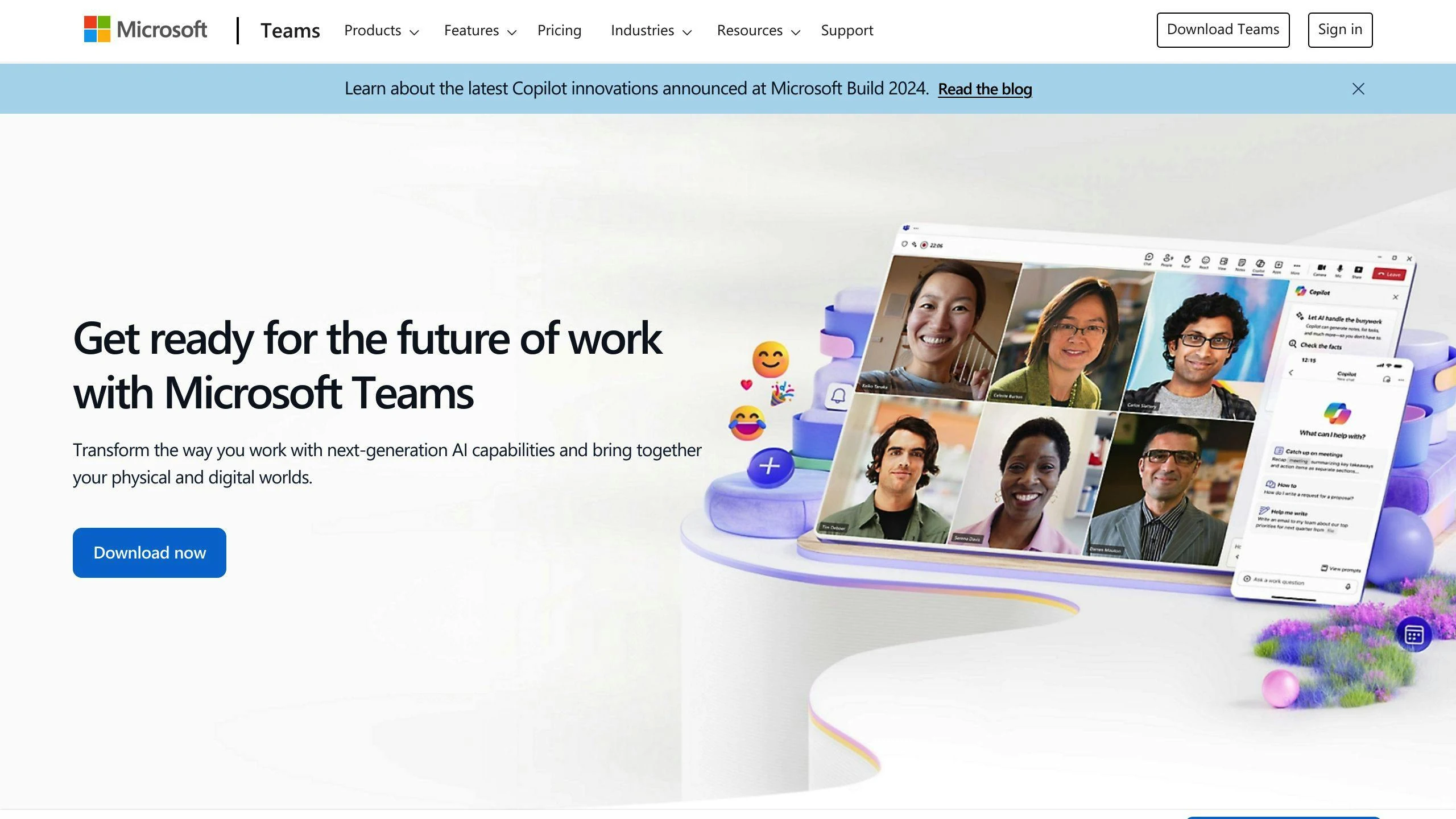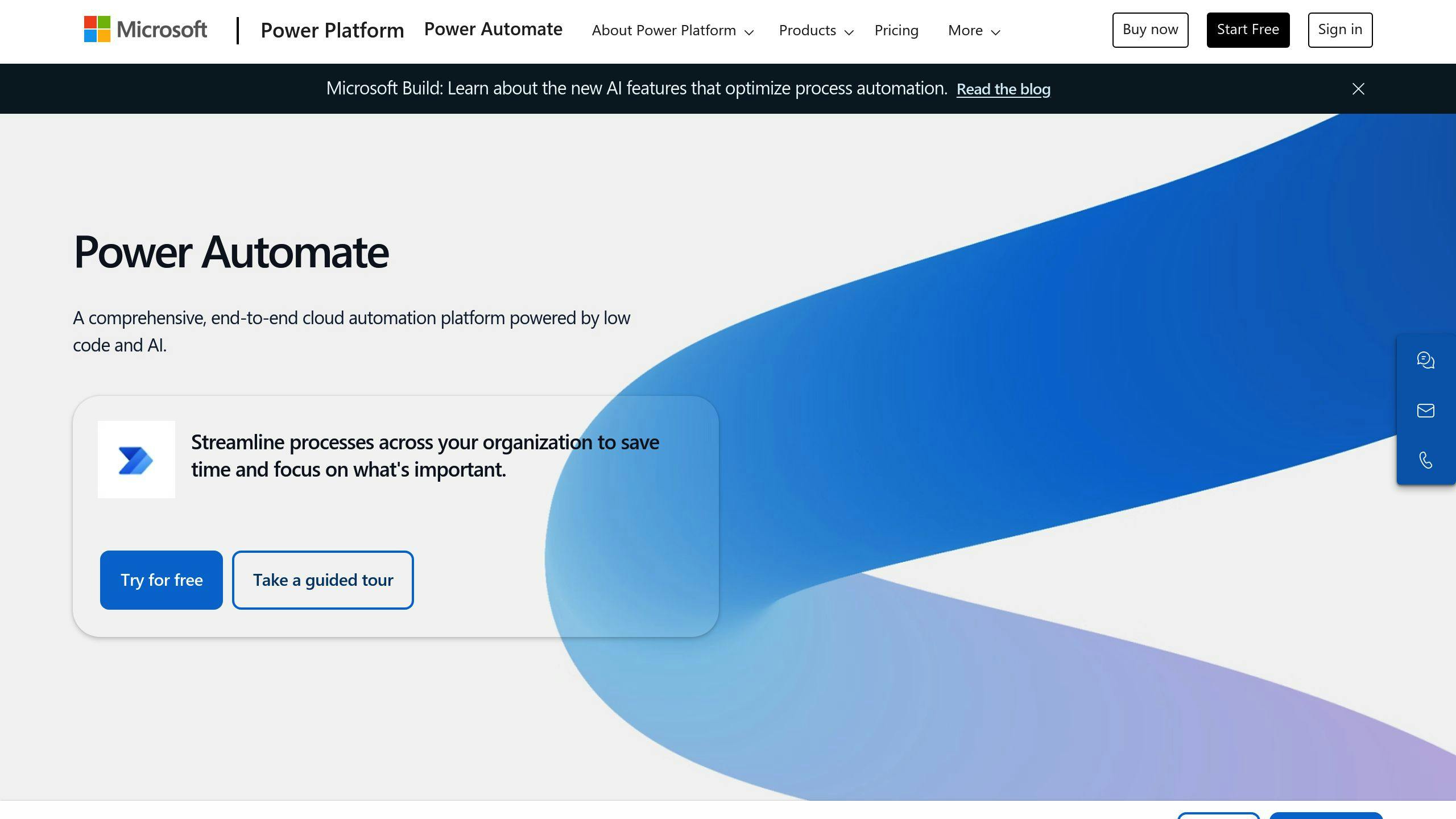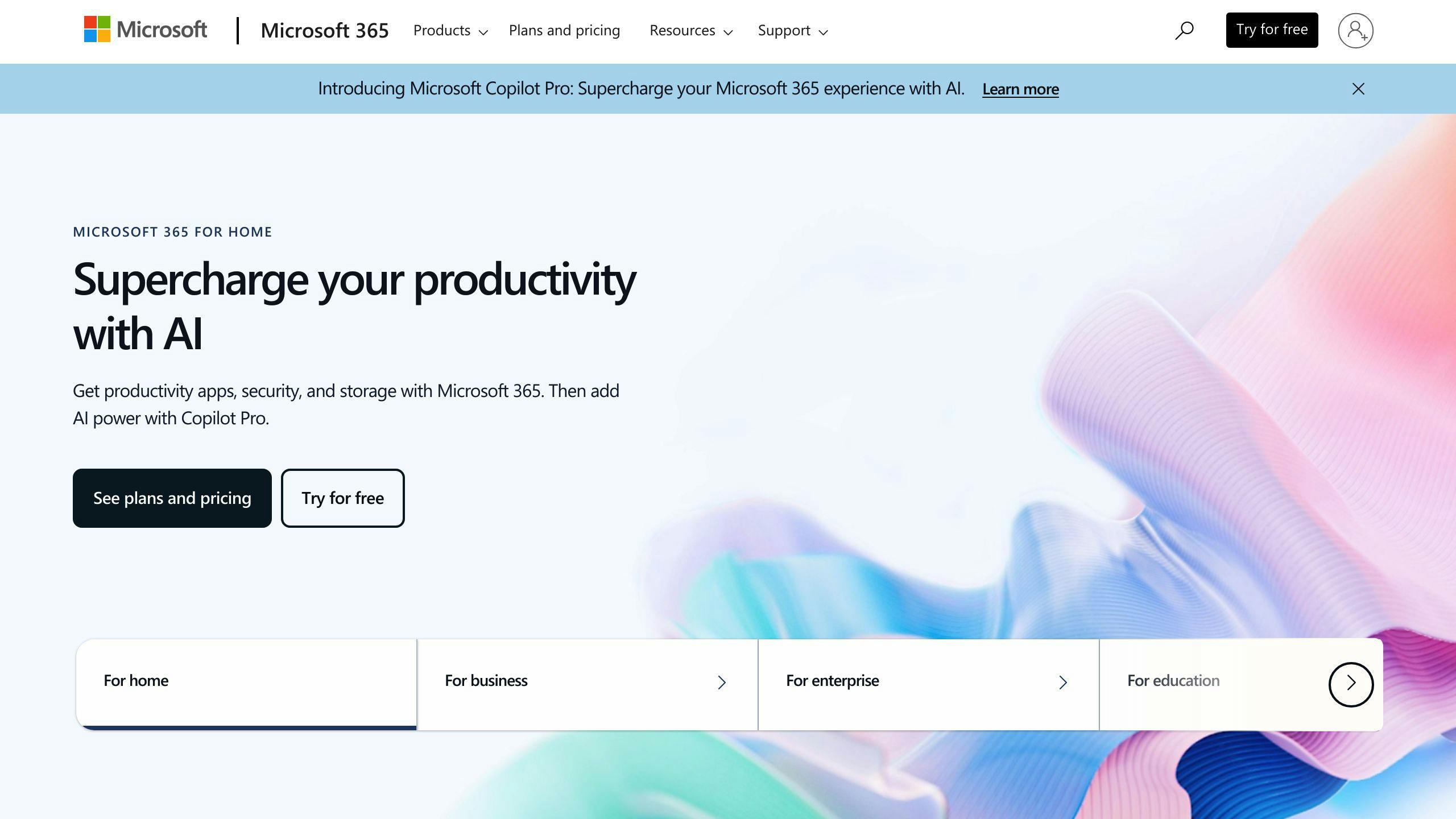Microsoft Teams now includes an Approvals feature that streamlines how teams manage approval processes. Here’s what you need to know:
- The Approvals app lets you create, manage, and share approvals directly in Teams
- It keeps all approvals in one place, speeds up decisions, and helps with compliance
- You can use it for project proposals, client agreements, content creation, HR actions, and financial transactions
Key features:
- View all approvals in one dashboard
- Start approvals from the app, chats, or channels
- Attach files to requests
- Track progress in real-time
- Use templates for common requests
Approval types:
| Type | Use Case |
|---|---|
| Everyone must approve | Document sign-offs |
| First to respond | Urgent decisions |
| Custom – All respond | Multi-step processes |
| Custom – One response | Gathering feedback |
Power Automate integration allows you to:
- Start approvals automatically based on triggers
- Set up custom actions after approvals or rejections
- Connect approvals with other Microsoft 365 tools
This guide will show you how to set up, use, and optimize approval tracking in Microsoft Teams for 2024.
Related video from YouTube
What are Microsoft Teams Approvals?

Microsoft Teams Approvals is a feature that makes it easy to create, manage, and share approvals right inside Teams. It’s all about making workflow approvals simpler and faster.
Basic features
The Approvals app in Teams packs a punch:
- View all approvals in one spot
- Start approvals from the app, chats, or channels
- Attach files to requests
- Track progress in real-time
- Use templates for common requests
Here’s a quick look at the main approval types:
| Type | How it works | When to use it |
|---|---|---|
| Everyone must approve | All approvers need to respond | For document sign-offs |
| First to respond | Any approver can complete it | For urgent decisions |
| Custom – All respond | You set options, everyone answers | For multi-step processes |
| Custom – One response | You set options, one answer is enough | For gathering feedback |
Power Automate and approvals

Power Automate takes Teams Approvals to the next level:
- Starts approvals automatically based on triggers
- Sets up custom actions after approvals or rejections
- Connects approvals with other Microsoft 365 tools and more
Want to set up an approval flow? Here’s how:
- Open Power Automate Design Studio
- Start a new flow
- Pick a trigger (there are over 350 to choose from)
- Use the Approvals block to kick off and wait for the approval
With Teams Approvals and Power Automate, you can streamline your approval processes and get things done faster.
2. Setting up approvals in Teams
Let’s get you started with approvals in Microsoft Teams. It’s easier than you might think!
2.1 Finding the Approvals app
Here’s how to find the Approvals app:
- Open Teams
- Click More added apps (…) in the left sidebar
- Search for "Approvals"
- Select the Approvals app
Pro tip: Pin the app to your sidebar for quick access.
2.2 Making approval requests
Creating a request is a breeze:
- Open Approvals
- Click New approval request
- Fill in the details
- Choose the approval type:
- All approvers: For document sign-offs
- First to respond: For urgent decisions
- Hit Send
You’ll find your request in the Sent tab.
2.3 Adjusting settings and access
A few things to keep in mind:
- Users need a Power Automate license
- Admins can manage the app in the Teams admin center
- Approvals are stored in the default Microsoft Dataverse environment
- If an admin deletes a group with approval templates, they have 30 days to restore it
That’s it! You’re ready to streamline your approvals in Teams.
3. Tracking approvals in Teams
Let’s talk about keeping tabs on your approvals in Microsoft Teams. It’s easier than you might think.
3.1 Using the approval dashboard
The Approvals app in Teams is your command center. Here’s what you do:
- Open the Approvals app
- Head to the dashboard
- Boom! All your sent and received approvals are right there
You’ll see request titles, statuses, creation dates, and who’s asking. It’s like a bird’s-eye view of your approval world.
3.2 Checking approval status and history
Want to know what’s going on with your approvals? Easy:
- Sent tab: Stuff you’ve asked others to approve
- Received tab: Things waiting for your thumbs up (or down)
- Status column: Tells you if it’s pending, approved, or rejected
Need more details? Just click on an approval. You’ll see comments, actions, and when everything happened.
3.3 Sorting approval requests
Got a lot of approvals? No sweat. Here’s how to stay organized:
- Use Filter to show only open requests
- Sort by date if you’re in a time crunch
- Group by type or department to keep things tidy
Pro tip: Pin the Approvals app to your Teams sidebar. It’s like having a fast-pass to your approvals.
| Action | Where to find it | What it does |
|---|---|---|
| View all approvals | Approvals app dashboard | Shows your approval big picture |
| Check status | Sent or Received tabs | Tells you where each approval stands |
| Filter requests | Filter option in app | Helps you find what you need, fast |
| Cancel an approval | Sent tab > Select approval > Cancel | Pulls the plug on an in-progress request |
4. Advanced approval tracking
Let’s explore some advanced ways to track approvals in Microsoft Teams. These methods can supercharge your approval processes and handle complex workflows.
4.1 Custom flows with Power Automate
Power Automate is your ticket to tailor-made approval workflows. Here’s a quick setup guide:
- Log into Power Automate
- Hit "My flows" > "New flow" > "Automated cloud flow"
- Pick a trigger (e.g., "When an item is created in SharePoint")
- Add the "Approvals – Start and wait for an approval" action
- Craft your custom approval steps
Want to send a Teams message when an approval wraps up? Or update a SharePoint list with approval status? Power Automate’s got you covered.
4.2 Making approval reports
Want the big picture on your approval processes? Here’s how to get it:
- Export approval data from Teams to OneDrive (CSV format)
- Use Power BI to visualize this data
- Set up dashboards for key metrics like approval time and rates
Pro tip: As of January 2023, you can filter approvals by status (Requested or Custom) and search by keywords in the approval title. This makes data hunting a breeze.
4.3 Connecting with other Microsoft 365 tools

Linking approvals with other Microsoft 365 services? It’s a game-changer. Check out these integrations:
| Tool | Integration |
|---|---|
| SharePoint | Trigger approvals for new list items |
| OneDrive | Auto-store approval data exports |
| Dynamics 365 | Create approvals for sales quotes or customer records |
| Teams | Send approval notifications in chat |
sbb-itb-8be0fd2
5. Tips for better approval tracking
Want to make your Teams approval tracking smoother? Here’s how:
5.1 Creating clear approval steps
Set up a consistent workflow:
- Name requests clearly
- Add details for quick decisions
- Use @mentions for sign-offs
"Define roles and responsibilities for each team member", says Microsoft Teams product manager Sarah Johnson.
5.2 Teaching users how to manage approvals
Help your team master the Approvals app:
- Run training sessions
- Show how to access the app
- Explain document attachments
5.3 Checking and improving processes
Keep your system running smoothly:
- Review workflows for bottlenecks
- Ask for user feedback
- Use Power Automate for complex approvals
| Tip | Action | Benefit |
|---|---|---|
| Clear naming | "Q4 Marketing Budget Approval" vs "Budget Approval" | Faster decisions |
| Set deadlines | Add due dates | Creates urgency |
| Automate tasks | Use Microsoft Flow for routine approvals | Speeds up process |
6. Fixing common approval tracking problems
Teams approval tracking can be tricky. Here’s how to fix common issues:
6.1 Notification issues
Not getting approval notifications? Try these:
- Sign out and back into Teams
- Clear the Teams cache
- Restart the app
- Use Teams on the web
Still no luck? Ask IT to check your permissions.
6.2 Slow or stuck approvals
Approvals moving at a snail’s pace? Here’s what to do:
1. Use the web app
Try https://teams.microsoft.com/ on Chrome or Edge.
2. Report the problem
Click the Help icon in Teams, then "Give feedback".
3. Try Power Automate
Use it to send approval requests instead of Teams.
6.3 Access problems
Can’t access approvals? Let’s fix that:
- Clear the Teams cache in %appdata%Microsoft\Teams
- Uninstall and reinstall the Approvals app
- Test on both desktop and web versions
If it’s a widespread issue, admins should contact support through the Microsoft 365 admin center.
Seeing an "unexpected server error" when attaching files? Try the steps above. If nothing works, use Power Automate until it’s fixed.
7. What’s next for Teams approval tracking
Microsoft Teams is beefing up its approval game. Here’s what’s coming down the pipeline:
7.1 New features on the horizon
Microsoft’s cooking up some tasty new tools:
- Workflows in file menus (June 2024)
- AI-powered flow suggestions
- SharePoint list approvals (mid-May 2024)
- Meeting lobby controls (July 2024)
"The new features will only be available in the New Teams client on the desktop and on the web", Microsoft says.
7.2 AI joins the approval party
AI’s not just knocking on the door – it’s busting in:
- Copilot in Teams is getting an upgrade
- AI library for developers (October 2023)
- Easier bot creation for approval tracking
Bottom line? Teams approval tracking is about to get a whole lot smarter and smoother. Stay tuned and get ready to shake up your approval game.
8. Wrap-up
Microsoft Teams approval tracking is a game-changer for workflow efficiency. Here’s what you need to know:
The Approvals app in Teams is your one-stop shop for creating, managing, and sharing approvals. You can kick off approval flows from chats, channels, or the app itself. It handles everything from basic requests to e-signatures.
But here’s where it gets really cool: Power Automate integration. It’s like giving your approvals superpowers. You can build custom flows using a ton of connectors. There are two main ways to do team approvals:
- Create an approval and send an adaptive card separately
- Post an adaptive card to a Teams channel and wait for responses
Here’s a quick look at how approval methods stack up:
| Approval Method | Who Can See It | Who Can Approve |
|---|---|---|
| Team Channel | Everyone in the team | Only specified users |
| Individual Users | Just the recipients | Only specified users |
When you’re setting up your process, think about:
- Who needs to see what
- How sensitive is the info
- Should you use team channels or DMs
One heads-up: you can’t send approval requests to private channels in Teams right now.
Want to make your approval tracking even smoother? Define roles clearly, set deadlines, automate the boring stuff, and keep tweaking your process.
With these tools and tips, you’ll be approving like a pro in no time.
FAQs
How do you follow up on Microsoft Teams approval?
Following up on a Teams approval is simple:
- Head to the Approvals hub
- Find your request in the Sent list
- Hit "Follow up"
Or try this:
- Open the chat or channel with the approval
- Click "View details" on the request
- Choose "Follow up"
This nudges anyone who hasn’t responded yet.
Where do Teams app approvals go?
Teams app approvals live in the default Microsoft Dataverse environment. Here’s the scoop:
- Dataverse doesn’t back up these approvals
- Admins can set custom data retention policies
- For more on managing environments, check the Power Platform docs
Pro tip: Need to keep approval records long-term? Export the data regularly or set up a custom flow to store approvals elsewhere.